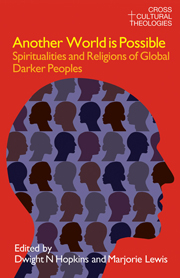Book contents
- Frontmatter
- Dedication
- Contents
- Acknowledgements
- Contributors
- Introduction
- Part I India
- 1 The Untouchable “Dalits” of India and their Spiritual Destiny
- 2 Dalits in India: Key Problems/Issues and Role of Religion
- Part II Japan
- Part III Australia
- Part IV Hawaii
- Part V England
- Part VI South Africa
- Part VII Botswana
- Part VIII Zimbabwe
- Part IX Ghana
- Part X Cuba
- Part XI Jamaica
- Part XII Brazil
- Part XIII USA
- Endnotes
- Select Bibliography
- Index of Subjects
- Index of Names
1 - The Untouchable “Dalits” of India and their Spiritual Destiny
from Part I - India
- Frontmatter
- Dedication
- Contents
- Acknowledgements
- Contributors
- Introduction
- Part I India
- 1 The Untouchable “Dalits” of India and their Spiritual Destiny
- 2 Dalits in India: Key Problems/Issues and Role of Religion
- Part II Japan
- Part III Australia
- Part IV Hawaii
- Part V England
- Part VI South Africa
- Part VII Botswana
- Part VIII Zimbabwe
- Part IX Ghana
- Part X Cuba
- Part XI Jamaica
- Part XII Brazil
- Part XIII USA
- Endnotes
- Select Bibliography
- Index of Subjects
- Index of Names
Summary
Introduction
Untouchability forbids the very presence of fellow humans. It is banned in the constitution of India. But it is prevalent in every village of 700,000 villages in India. In 1991 there were 160 million Dalits in number. At present there are more than 200 million Dalits in India. Untouchables (Dalits) are third-rate citizens, who reside on the outskirts of the villages. They are not allowed to draw water from village wells. They are not allowed to walk in the village main streets; they are not allowed to wear shoes and neat and decent dresses. Separate glasses greet them in hotels and restaurants. Their entry into temples, parks, recreation centers and other public places is banned. Inter-dining and inter-caste marriages are strictly prohibited. Menial jobs are allotted them. The Indian Hindu religious caste system is the root cause for this Untouchability.
The Indian Caste System
Castes are the building blocks of the Hindu religious social order in India. The caste system contains three important characteristics: (1) Mutual repulsion; (2) Hierarchical unequal socioeconomic organization; and (3) Heredity (descent based discrimination). The Hindu society recognizes the caste hierarchy of four classes (Chaturvarnas): (1) Brahmins (Priests), (2) Kshatriyas (Kings), (3) Vaishyas (Merchants), and (4) Shudras (Servants). Those who are outside of this caste system are “Out Castes” or untouchables (i.e., Dalits or Scheduled Castes); the Brahman Hindu scriptures, Gods, and Law givers have always accepted and maintained caste inequality. Hatred is inbuilt in the very social stratification of caste.
- Type
- Chapter
- Information
- Another World is PossibleSpiritualities and Religions of Global Darker Peoples, pp. 9 - 19Publisher: Acumen PublishingPrint publication year: 2009

